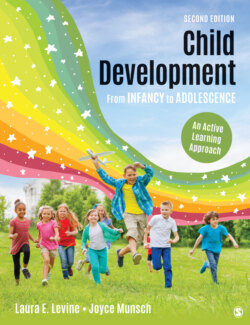Читать книгу Child Development From Infancy to Adolescence - Laura E. Levine - Страница 115
На сайте Литреса книга снята с продажи.
Jean Piaget’s Cognitive Developmental Theory
ОглавлениеJean Piaget. Based on his detailed observation of children, Piaget described them as “little scientists” who actively explore their environment and learn from those experiences.
Patrick Grehan/ Contributor via Getty Images
Jean Piaget (1896–1980) was a Swiss scientist who studied children’s thinking using what is called the clinical method. He encouraged children to talk freely and learned about their thoughts from a detailed analysis of what they said (Piaget, 1955).
Piaget believed we are constantly adapting to our environment by organizing the world in ways we can understand. The units we use to organize our understanding are called schemas. They consist of a concept and all the associations to that concept that we have developed through our past experiences. For example, we all have a schema for gender, which contains all the expectations and associations we activate when we see women and men.
Schema: A cognitive framework that places concepts, objects or experiences into categories or groups of associations.
According to Piaget, adaptation consists of two processes: assimilation and accommodation. In assimilation, we take new information and put it into an existing schema, whether it really fits there or not. Take the example of a little boy who goes to the zoo and sees an elephant for the first time. He turns to his mother and says, “Look, it’s a big doggy with two tails.” This child does not have a schema that helps him make sense of an animal with both a trunk and a tail, so he tries to fit this new experience into one of his existing concepts. Will he always think the elephant is a strange dog? Of course not, and this is where the process of accommodation comes in. As his mother points out the unique features of an elephant, the child accommodates this new information by creating a new schema, one for elephants. In Piaget’s theory, a process he called equilibration is the constant seesaw between assimilation and accommodation. As we have new experiences and learn new things about the world, we assimilate new information into existing schemas, but if the new information cannot be assimilated, it throws us into a state of disequilibrium. We then need to change our schemas to accommodate the information, so we can return to a steady state of equilibrium.
Assimilation: Fitting new experiences into existing mental schemas.
Accommodation: Changing mental schemas so they fit new experiences.
Equilibration: An attempt to resolve uncertainty to return to a comfortable cognitive state.
Like Freud and Erikson, Piaget believed children change in qualitative ways from one age period to the next. The stages he described were based on the way he believed children thought about and understood the world at each age level. Piaget believed children are not just less knowledgeable than adults; rather, they think in qualitatively different ways at each developmental stage. We describe these stages in detail when we examine Piaget’s theory in more depth in each of the chapters on cognitive development.
